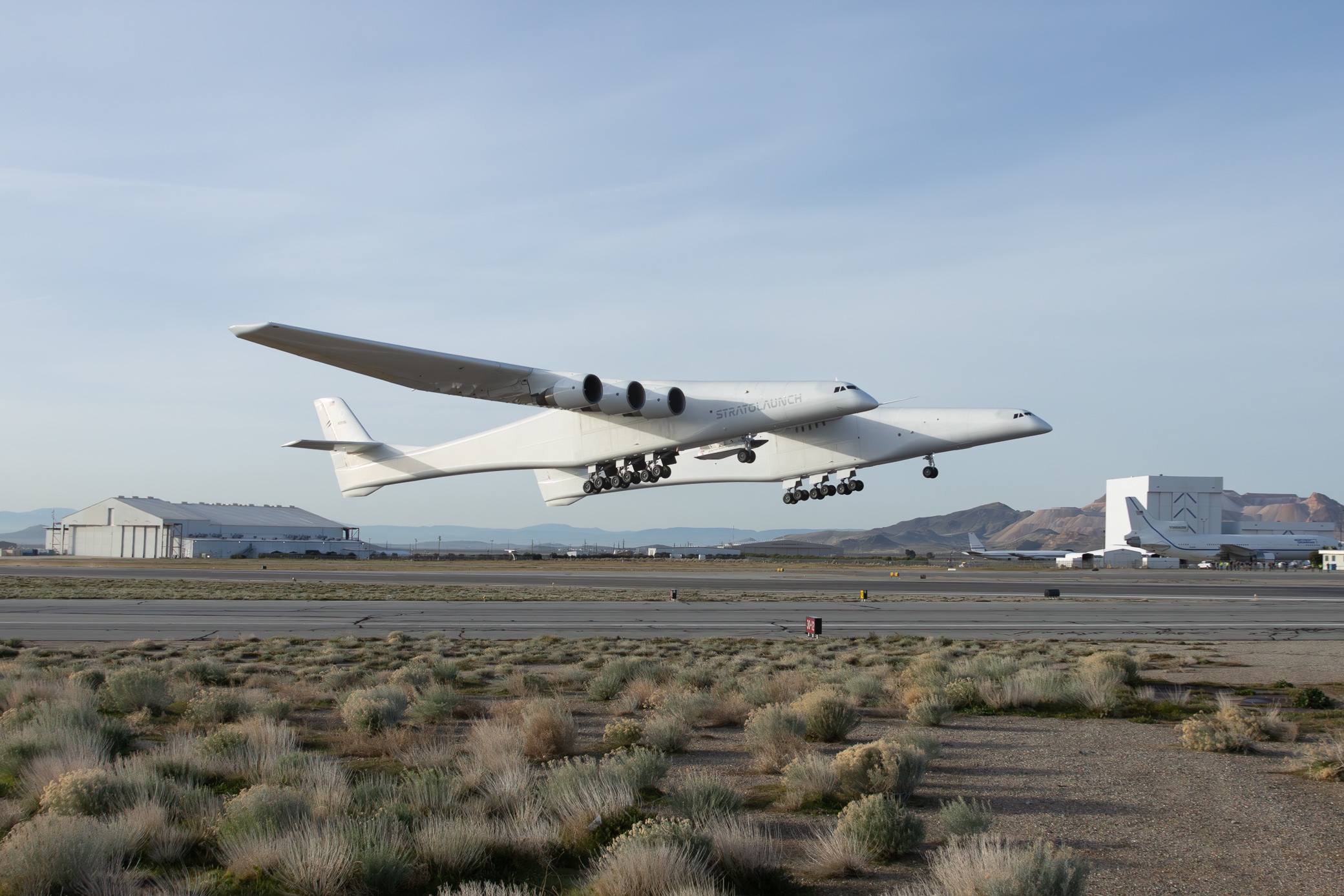Products You May Like
WASHINGTON — Stratolaunch conducted the first powered flight of its Talon vehicle March 9, reaching “high supersonic” speeds in the uncrewed test.
The Talon-A vehicle, designated TA-1, took off attached to the company’s Roc aircraft from the Mojave Air and Space Port in California at 10:17 a.m. Eastern according to flight tracking data. The plane flew west to a location in the Pacific off the central California coast, where it released TA-1 at an unspecified time. Roc returned to Mojave more than four hours after takeoff.
Stratolaunch executives said in a call with reporters that they could not disclose the top speed or altitude of the TA-1 on its flight, citing “proprietary agreements” with unspecified customers. They were, though, satisfied with the flight.
“As part of our successful achievement of the test objectives, we did reach that high supersonic regime approaching hypersonic flight,” said Zachary Krevor, president and chief executive of Stratolaunch. Hypersonic flight is typically defined as speeds higher than Mach 5.
Aaron Cassebeer, senior vice president of engineering and operations, said the TA-1 achieved its major test objectives, including release from Roc and ignition of its engine, sustained acceleration and climb through high supersonic speeds while maintaining control, then decelerating and gliding to an ocean splashdown. TA-1, an expendable vehicle, was not recovered.
“Overall, we’re incredibly pleased with how TA-1 performed today,” he said. “As it stands right now, we are well positioned to continue our planned test series.”
The company’s next vehicle, TA-2, is its first reusable hypersonic vehicle. It is scheduled to begin flight tests in the second half of the year, with another reusable vehicle, TA-3, under construction. Stratolaunch is also modifying a Boeing 747 is acquired last year in Virgin Orbit’s bankruptcy auction to serve as a second air-launch platform.
Stratolaunch was founded more than a decade ago by Microsoft co-founder Paul Allen with the initial goal of providing air-launch services using a giant twin-fuselage, six-engine aircraft. The company at various times considered a variant of SpaceX’s Falcon 9, a vehicle concept called Thunderbolt by Orbital ATK (now part of Northrop Grumman) and that company’s existing, but much smaller, Pegasus XL rocket. It then started work on its own launch vehicle and engine.
The company pivoted after the 2018 death of Allen. The company dropped plans for its own launch vehicle and was later sold to a private equity firm, Cerebus. The company announced in 2020 it would focus instead on developing hypersonic vehicles that would be air-launched by Roc.
The TA-1 flight was also a milestone for Ursa Major Technologies, the company that developed the Hadley engine that powers the vehicle. That engine, which uses liquid oxygen and kerosene propellants, is designed to produce 5,000 pounds-force of thrust. Ursa Major had not disclosed any flight tests of that engine before the TA-1 flight.
Cassebeer said the Hadley engine fired for about 200 seconds on the flight. “The Hadley engine performed very well today. It met all of our expectations,” he said.
